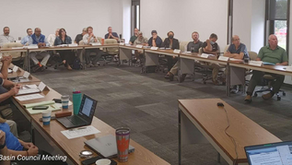Two Ways to Improve Reliability and Ease Co-Worker Understanding
- JD Solomon
- Nov 23, 2021
- 2 min read
Updated: Aug 11, 2024

Fault Avoidance and Fault Tolerance are the two ways to improve reliability. By reliability, I mean the probability that a designed product or system will function satisfactorily under stated operating conditions. Colloquially, this means “more uptime” and “reducing faults.”
The Right Tool for the Job
The ability of a product or system to perform satisfactorily depends primarily on its design; however, the quality of its production, how it is operated, and the way it is maintained (restored to approximate designed condition) have meaningful but secondary impacts. There is no substitute for having the right tool for the job.
Fault Avoidance
Fault Avoidance is accomplished by increases in the reliability of individual components or the system. There are five approaches:
Higher reliability components
De-rating (operating at lower stress levels)
Reducing the number of components
Improved screening/testing to reduce infant mortality
Improved maintenance conditions and practices
Fault Tolerance Is Usually Redundancy
Fault Tolerance is accomplished by designing a system where faults are acceptable. There are two approaches:
Redundancy (which is different than merely having two components when you need just one)
Robustness (the system is forgiving even if operating outside normal operating conditions)
Two Ways to Improve Reliability
Improving reliability is more intuitive if viewed through Fault Avoidance and Fault Tolerance. The difficult part is understanding how a system operates in practice, mapping the reliability block diagrams (or fault trees), determining the optimal approach for improvements, and communicating to decision makers. Start with straightforward definitions and problem framing. The difficult parts will become much easier.
JD Solomon Inc provides project development, asset management, and facilitation for facilities, infrastructure, and the environment. Contact us for more information about reliability assessments, risk management, and programmatic approaches for performance improvement.







Comments